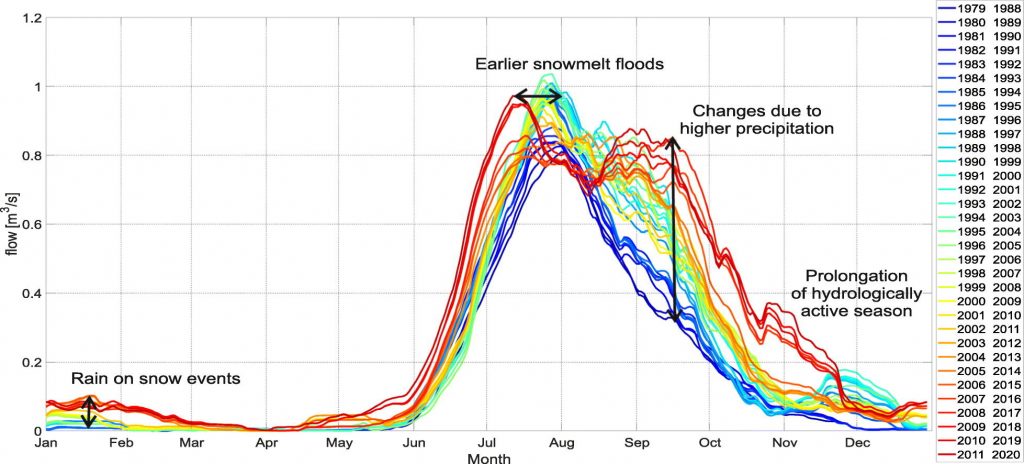This is the title of the article by Assoc. Prof. Marzena Osuch, dr. Tomasz Wawrzyniak and dr eng. Elżbieta Łepkowska. The paper was published in the journal Science of The Total Environment.

This study investigates the response of four High Arctic catchments with differing proportions of glacierization to changing climatic conditions. The study area located in SW Spitsbergen, has experienced a warming of 4.5 °C in the last 40 years along with a large increase in autumn rainfall. The changes in flow regime were determined based on available hydro-meteorological data and simulations of a semi-distributed rainfall-runoff model, which allowed recon-struction of streamflow in the period 1979–2020 and trend analyses for each calendar day. Similar trends of change were detected in all studied catchments. These include earlier onset of snowmelt driven floods (by two weeks over the period of analysis), large increases in autumn flows, prolongation of the hydrologically active season (starts earlier and lasts longer), decrease in flows in the latter half of June and the early part of August (except for the Breelva catch-ment). As a result of increases in autumn precipitation, the flood regime in these catchments has changed from snowmelt-dominated to the bi-modal with peaks in both July/August and September. The results also indicate differences in the magnitude of hydrological response depending on the percentage of glacial coverage in the catchments. The larger the glacierized area is, the larger the changes in the flow regime.
The hydrological regime of SW Spitsbergen catchments has undergone dramatic changes over the last four decades. Such a shift in hydro-climatic conditions is larger than that observed in lower latitudes and has significant environmental implications.
Link to the article: https://www.sciencedirect.com/science/article/abs/pii/S0048969722000134?via%3Dihub








